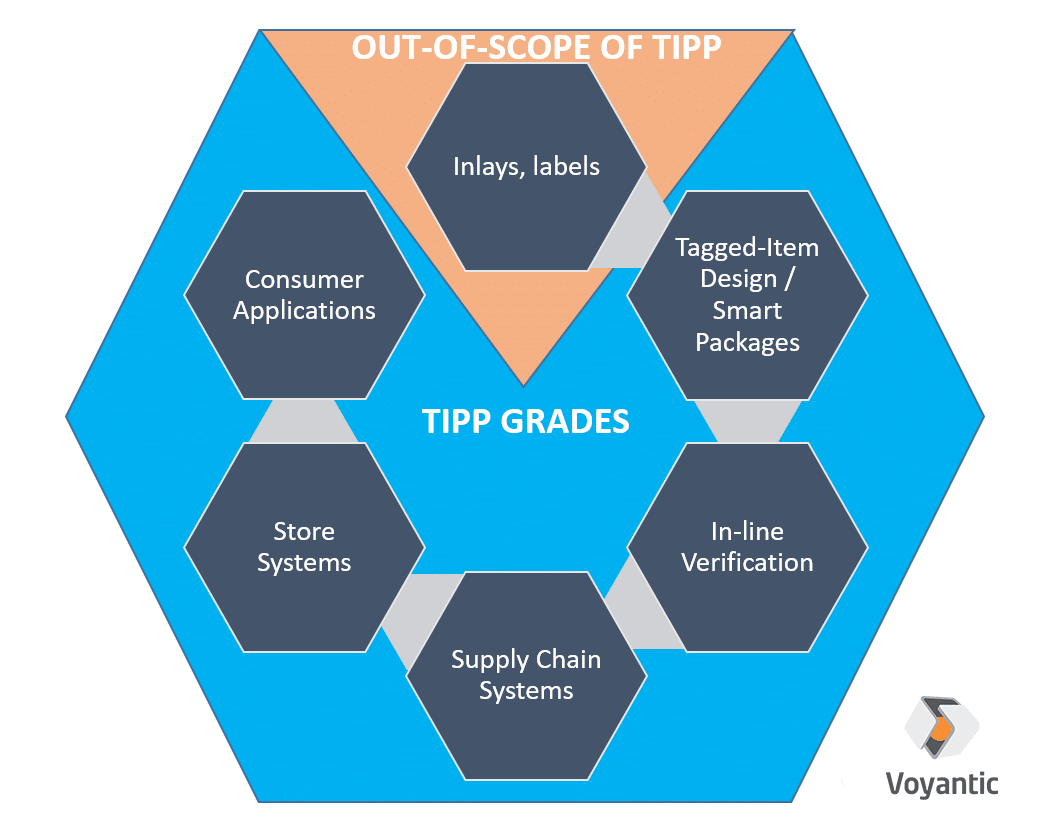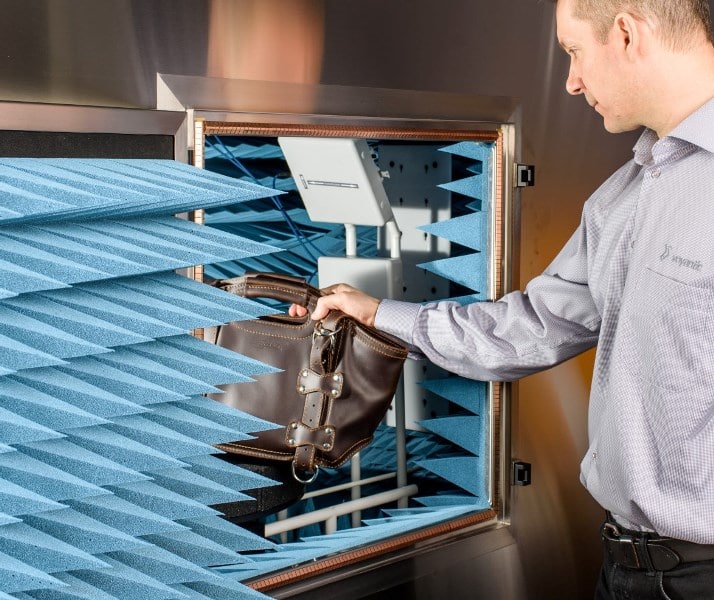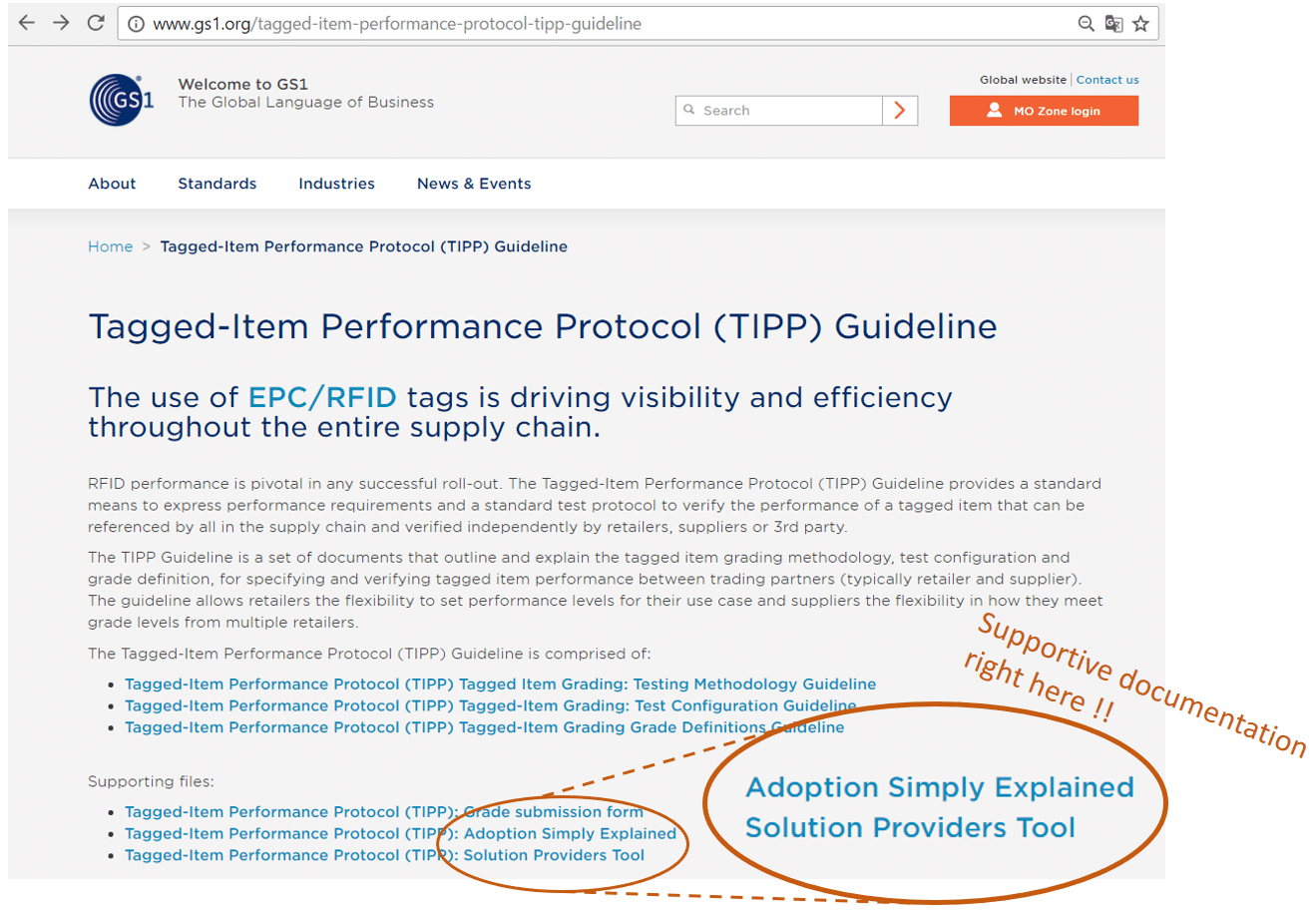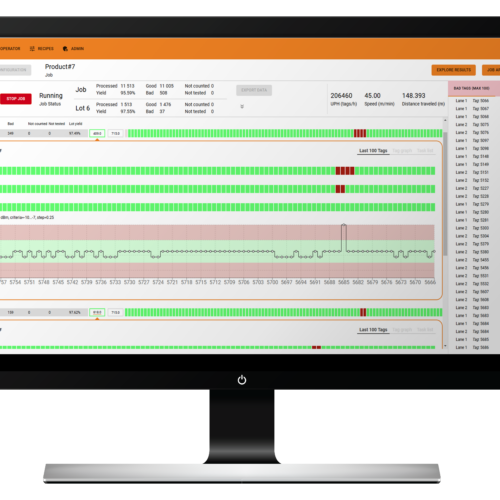After over 18 months of hard work, the TIPP work group under the GS1 Global Office has now released the Tagged Item Performance Protocol (TIPP) for global usage. The guideline focuses on readability of tagged items, supports all the global RAIN RFID frequencies, and also comes with additional supportive documentation to make the adoption process easier.
Many experts have invested a considerable amount of time in the creation of this guideline, and I am personally pleased with the outcome. The feedback that I’ve already collected leads me to believe that the standard lays out useful guidance also for RAIN RFID projects outside of the retail sector. Read on to learn what this standard means for the industry and end users.
TIPP Simplifies RAIN RFID Adoption for Retailers
The early adopters of RAIN RFID technology needed to cope with plenty of piloting, in-store testing and other iterative procedures to make the technology work out for them. A decade later, now in 2017, both the technology itself and the surrounding ecosystem have matured. Standards also emerge to make adoption of technology easier, faster and less expensive.

The end users define their specific tagging requirements as TIPP grades that are easy to communicate between stakeholders. Similar standard communication methods are already utilized in barcoding, EPC tag data standard and product attributes – standards boil down complicated technical issues into simple ones thus removing headaches and misunderstandings.
But wait a minute – some retailers rely on the approved inlay lists from the ARC Program, so what is the relevance of TIPP for them?
TIPP Scales – Removes Bottleneck of the ARC Program
The well-known ARC Program uses a sophisticated test system to gather and compile a database of RFID label performance characteristics. Combined with the end user specific requirements gathered during pre-pilot tests, the local experts then maintain certified inlay lists across retail item categories.
However, a limitation of the ARC Program is that the only official place to perform the tests for a newly developed inlay or retail item category is the one Auburn University test laboratory in Alabama, USA. There are only a limited number of experts available for pre-pilots, thus a bottleneck gradually developed.
As the number of deployments started rising across continents, the ecosystem simply needed methodology that scales. Now that the TIPP guideline establishes open grades and open test methodology, anyone can start performing TIPP tests locally and the bottleneck is removed.
Under the hood TIPP is about 95% the same as the ARC test setup. The main difference is how the test data is interpreted. In fact it should be acknowledged that the ARC Lab Director Justin Patton and Director of Technology Dr. Senthilkumar CP both gave significant contribution during the creation of TIPP US.

Building the Future for Smarter Packages
An aspect of TIPP is that it enables tagging solutions providers to innovate with new breeds of smart packages since they are no longer dictated to work only with inlay-based RAIN labeling. Moving away from diverse inlay lists also brings increased possibilities for suppliers to drive down the cost of tagging. In this perspective I don’t expect the cost of an inlay to drop as such, instead I am confident that management, stocking of labels and finishing processes around tagging will find new efficiencies.
Origins of TIPP Date Back to VICS and ILRI
For the folks out there that want to understand how TIPP came to existence, I’ve gathered a brief history piece in another document. If ILRI, VICS or ARC Arkansas rings any bells, you may want to give the History of TIPP document two minutes of your time.
In essence TIPP is rooted on
- the joined effort within the retail industry to increase the efficiency and transparency of supply chains
- the pain that RFID projects caused for the early adopters in the retail industry
- the learnings from prior technology implementations, such as barcodes
- the ongoing RAIN RFID deployment evolution from handheld scanners to zone sensor infrastructure.
Next Step: Guideline to Be Adopted by Retailers
As the TIPP guideline was developed for the retail community by the request of the retail community, I next look forward to the retailers and their suppliers to start adopting this global guideline. To make the transition smoother this time around, the guideline comes with supportive documentation both for the retailers and solution providers.

Needless to say, if there are any obstacles on the way, both the GS1 Member Organizations and technology vendors are glad and available to assist. A new test protocol for dense stacks will be added to the standard in Q2/2017 together with new grades – mighty good news for anyone in the sporting goods business!
Over time we all should learn more about the benefits that the standard offers. When it comes to simplifying RFID vendor compliance management, my recent blog post already discussed that side of the story.
Methodology Likely to Find Ground Also Outside of Retail
I’ve had the privilege to explain and justify TIPP for various stakeholders over the recent couple of years. Received feedback suggests that the end user segments outside of retail consider TIPP as a benchmark of how to express tagging requirements in a scalable way. One hurdle for those folks in various businesses will be to find and motivate an un-biased association to efficiently nurture the standard creation – same as VILRI and later GS1 did for retail.
Any comments or concerns? Please let me hear it!
All blog posts


